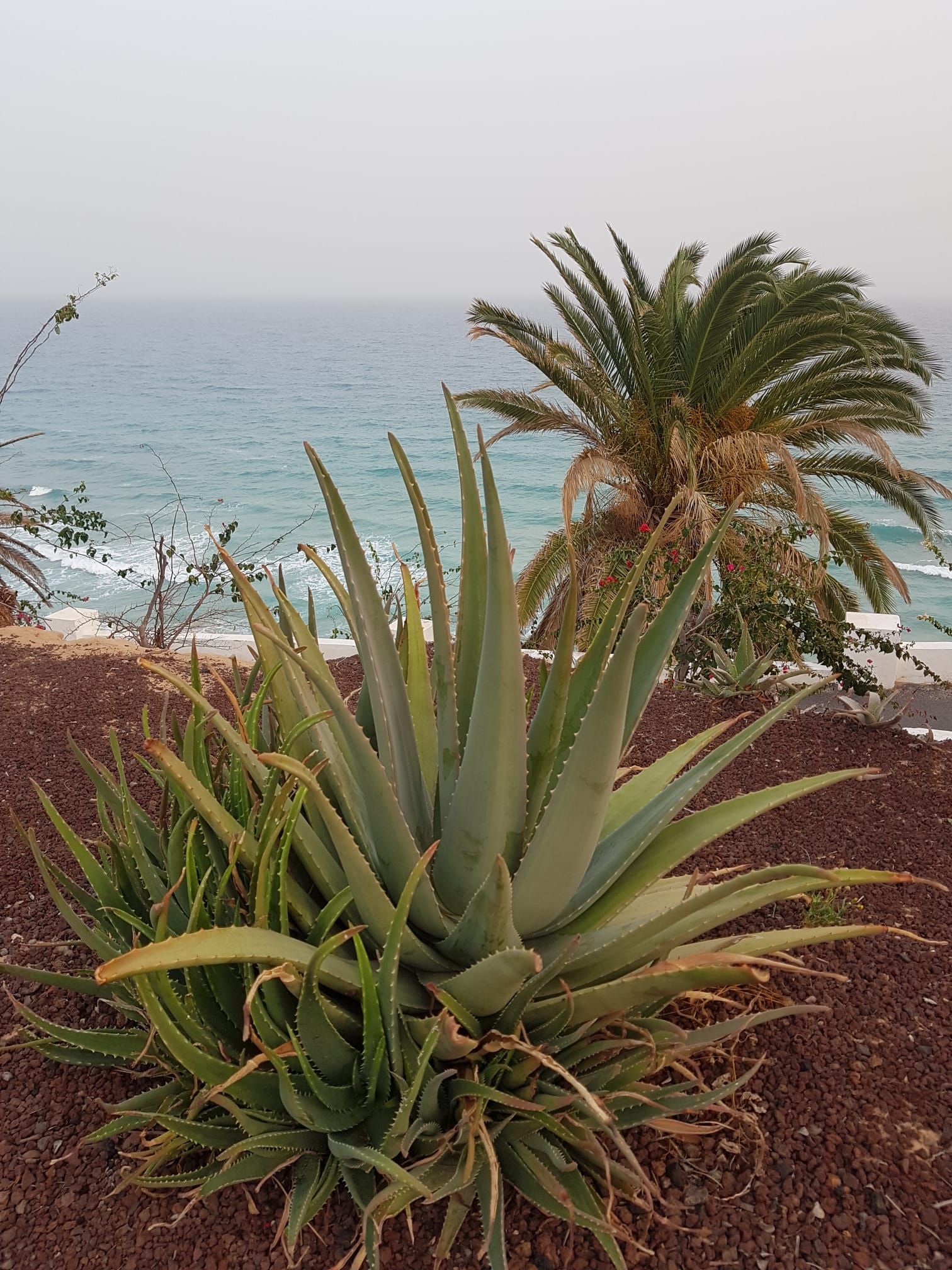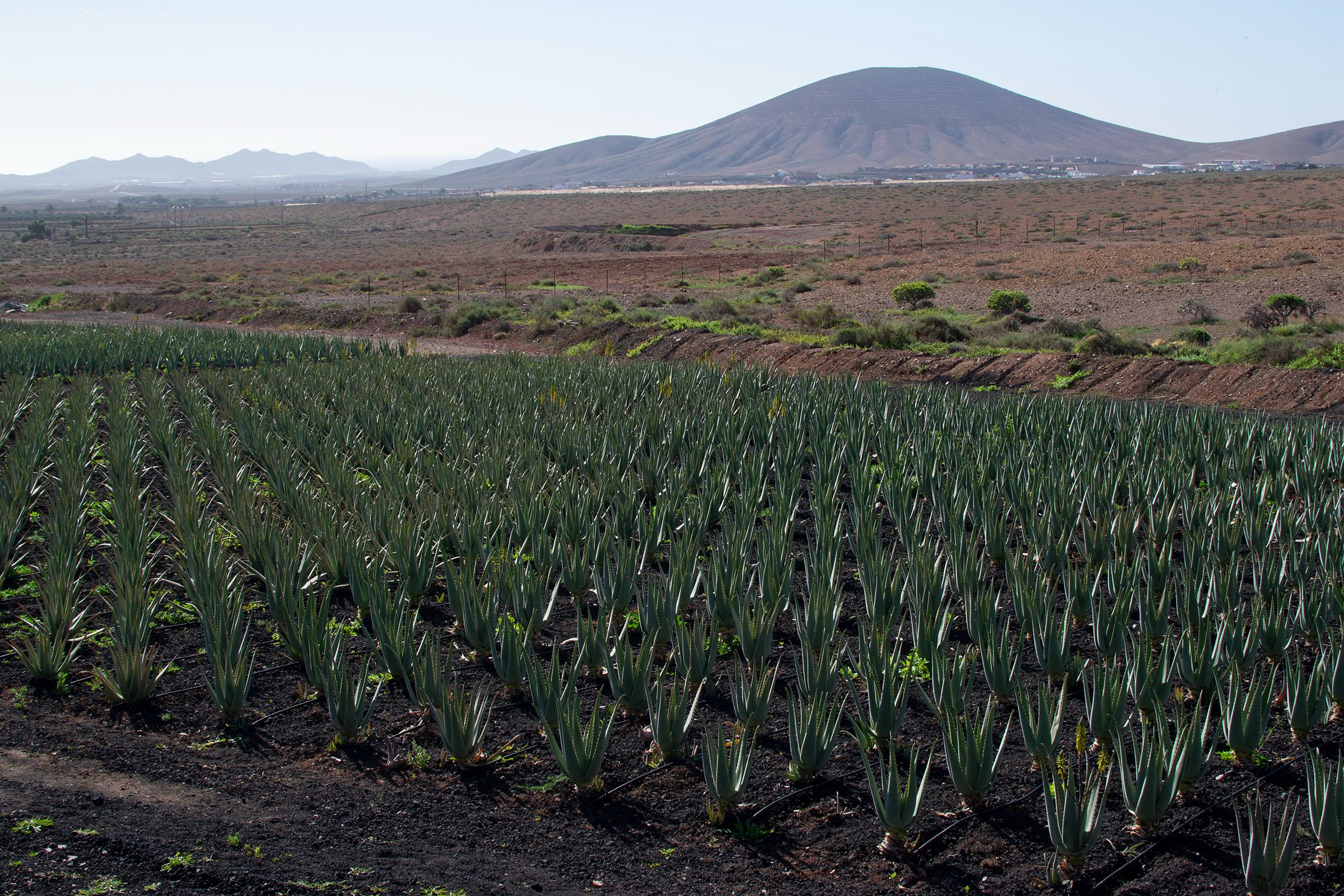
Welcome to Fuerteventura Me and my family escaped the cold for a bit and went to Fuerteventura. Fuerteventura lays amongst the Canary Islands and is part of these Spanish islands. This would be the first time visiting the Canaries and Fuerteventura. Once we arrived at the airport of Fuerteventura we could feel the sun on our face, welcoming us. This island is unlike other islands. It looks like another planet, no wonder why some Star Wars movies were partly filmed here!
 [fuerteventura]
[fuerteventura]
The Aloe Vera farm Anyway, another thing Fuerteventura is known for is their Aloe Vera Factories. The climate is perfect for many different cactus species to grow therefor Aloe Vera is grown here in large quantities. On the way to Tindaya mountain my mother saw that we were about to pass an Aloe vera farm and asked if we could stop for a visit. My mother and I love Aloe vera, we have many Aloe plants in our family home and use it to make medicine or face and hair masks. At the farm we got a free tour and our guide explained in detail about the properties of the Aloe Vera and more. Some information was familiar to us, but we got some great new facts to bring home and apply. I’m happy to share all facts about this amazing plant here today.

 [the aloe vera farm]
[the aloe vera farm]
Magic properties So, the Aloe plant is in my opinion a magic plant. Inside the plant you can find more than 200 ingredients, including minerals, lignin, saponins, sugars, enzymes and vitamins. The vitamins include vitamin A, C and E, which are antioxidants. Apart from that it also carries folic acid, choline and vitamin B12. It is super good for your skin; hair and you can eat the plant too to benefit from its properties. My mother also taught us to use it whenever we got injured. The gel from the plant accelerates the healing process of any wound.
Usage tips Before you can use the plant, you need to remove the green outer part of the plant. In the farm they first cut the plant open from the bottom and let the plant leak for 24 hours. When you cut open any Aloe vera plant you will notice apart from the gel and transparent sticky part there is also a darker consistency. By letting the plant leak for 24 hours this darker consistency has the chance to leave the plant. Our guide told us this consistency is very laxative for your body when consumed, you only need 2 little teaspoons of it to get you running to the loo. Therefore, it is best to remove it from the plant. If you don’t remove it the right way and consume the aloe vera plant, you will also notice a very bitter taste to it. I believe you don’t necessarily need to remove the laxative part when you are using it for your skin, just don’t apply it near to your mouth in order to avoid the bitter taste… (talking from experience) Be aware, it’s a great boyfriend repellent too. So, depending on the purpose of use you can decide to get rid of the laxative bitter part or not.
More properties Another detail our guide mentioned was that when you apply aloe to the skin it infiltrates the skin quickly unlike many cosmetic creams which just accumulate on top of your skin and don’t go as deep into the skin as aloe does. Then she brought up that it also has transporting properties. This means if you add any other ingredients like natural skin oils for example it carries the ingredients and takes it as deep as it possibly can.
Aloe plant care At the farm they had many different Aloe vera products to buy so you can skip having to grow the plant, cutting and so on. It’s always handy and fun to have your own Aloe vera plant at home though. In matter of fact this plant needs minimal care. The trick to have a good aloe plant is to forget about the plant, go on vacation and come back. The Aloe Vera needs almost no water at all, especially in humid climates the plant will absorb water like a sponge from the air itself. The guide told us if you see a healthy big Aloe vera plant in a household it means the owner doesn’t take care (give water) of the plant. This was new information to us; my mum would water our aloe plants at least every 2 weeks (too much). Then another tip we got was to change the soil we use for our aloe plants with a mixture of normal plant soil combined with sand, the more sand the better.
I hope you have enjoyed this blog about the Aloe farm and the amazing Aloe plant itself. In the next one I would like to share some DIY aloe recipes and in more depth usage of the plant. See you in the next one!
 [all photos are taken by me and my family during the trip]
[all photos are taken by me and my family during the trip]